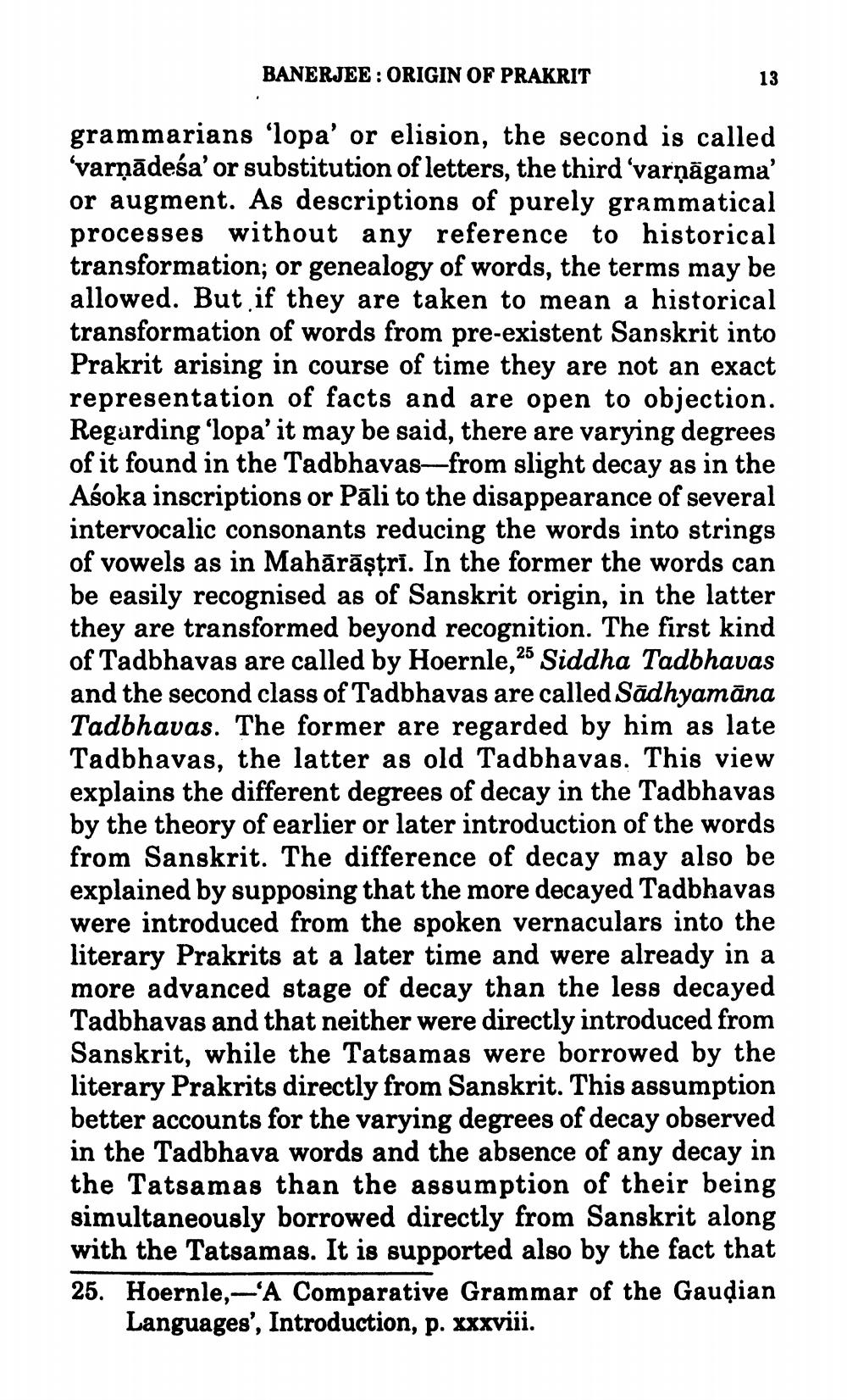________________
BANERJEE : ORIGIN OF PRAKRIT
grammarians 'lopa' or elision, the second is called 'varņādeśa' or substitution of letters, the third 'varṇāgama' or augment. As descriptions of purely grammatical processes without any reference to historical transformation; or genealogy of words, the terms may be allowed. But if they are taken to mean a historical transformation of words from pre-existent Sanskrit into Prakrit arising in course of time they are not an exact representation of facts and are open to objection. Regarding 'lopa' it may be said, there are varying degrees of it found in the Tadbhavas—from slight decay as in the Asoka inscriptions or Pāli to the disappearance of several intervocalic consonants reducing the words into strings of vowels as in Mahārāştri. In the former the words can be easily recognised as of Sanskrit origin, in the latter they are transformed beyond recognition. The first kind of Tadbhavas are called by Hoernle, 25 Siddha Tadbhavas and the second class of Tadbhavas are called Sādhyamāna Tadbhavas. The former are regarded by him as late Tadbhavas, the latter as old Tadbhavas. This view explains the different degrees of decay in the Tadbhavas by the theory of earlier or later introduction of the words from Sanskrit. The difference of decay may also be explained by supposing that the more decayed Tadbhavas were introduced from the spoken vernaculars into the literary Prakrits at a later time and were already in a more advanced stage of decay than the less decayed Tadbhavas and that neither were directly introduced from Sanskrit, while the Tatsamas were borrowed by the literary Prakrits directly from Sanskrit. This assumption better accounts for the varying degrees of decay observed in the Tadbhava words and the absence of any decay in the Tatsamas than the assumption of their being simultaneously borrowed directly from Sanskrit along with the Tatsamas. It is supported also by the fact that 25. Hoernle,-'A Comparative Grammar of the Gaudian
Languages', Introduction, p. xxxviii.




